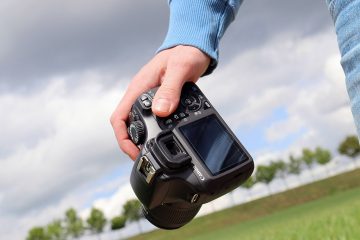Do You Actually Need A Polarizing Filter

Again, I am writing about the most overlooked piece of equipment in photography. the polarizing filter. It surprises me every time I see photographers who don’t use a polarizer. Although post-processing may be able to fix some issues with polarizers, polarizers are far more effective and simple to use.

What does a Polarizing Filter do?
The polarizing filters are used to remove certain types of light.
Here’s a quick overview of a polarizer
- Allows you to see below the water’s surface without glare
- Reduces the glare from wet features (i.e. rocks and plants after a storm), which improves their color
- You can use slower shutter speeds for blurred movement, such as water moving.
- By increasing the contrast between the atmosphere and the clouds, it creates definition in bright blue skies.
Polarizing filters, as I have already mentioned, are an underrated piece of gear for photographers. However, there are times when using a polarizer can be a mistake.
Why Polarizing Filters are a Bad Idea
Use a polarizing filter only in low light. It is counterintuitive to do so, as they have some light-blocking ability. You don’t have to make it darker lower if there is already low light. A specific rule about when to use a polarizing lens is when you are shooting rainbows. Polarizing filters won’t work for rainbows because they are reflected light.
You can also try shooting scenes without or with your polarizer.
You might believe that certain landscapes will look better without sunlight reflecting off the lake’s surface, but you find it more appealing when you take photos without a filter. Editor’s tip: Any landscape photographer should have a good Circular Polarizing filter. Polarizing filters not only reduce the glare from water and other nonmetallic surfaces but also increase the sky’s contrast and minimize atmospheric fog. A circular polarizer works best when the sun is at 45 degrees from your position. To get the best results, try to set up your shot as closely as possible to this angle. Find out more about circular polarizers.
My Favorite Polarizer
Kenko’s Nyman Wide Angle Slim Ring polarizing filters is a great value and one of the best on the market. This filter is available for as low as $40-50 depending upon the size and weight you choose. It weighs in at just 2 ounces. This filter is made from Japanese Asahi optical glasses, so you won’t see the horrible X-patterns that you might see on a lower quality polarizing filter.
Kenko has also added 16 layers to the filter’s multi-coating, making them easy to clean and repel water and smudges. This is a great benefit as you will spend more time taking the shots you want and less cleaning up your filter. Kenko also took the time to create a low-profile, slim ring. This prevents me from igniting with my wide-angle lenses. The mounting ring also has a black antireflective coating that eliminates flare and reflections. These are just a few of the many reasons I believe this filter is the best polarizing one out there. There are many polarizer options. I prefer my Kenko polarizer. It is well-built, durable and performs well.






